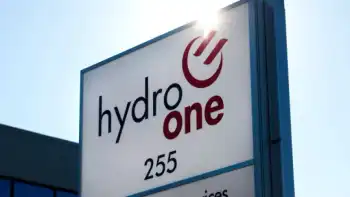Bullfrog Power making a mark
By Toronto Star
Protective Relay Training - Basic
Our customized live online or in‑person group training can be delivered to your staff at your location.

- Live Online
- 12 hours Instructor-led
- Group Training Available
The cartoon amphibian is the logo of Bullfrog Power, the purveyor of "green" electricity that in less than three years has made itself synonymous with renewable power, despite being a tiny swimmer in Ontario's energy pond.
The company handles a minuscule fraction of the electricity generated in the province – just three ten-thousandths of a per cent, or 0.0003. Yet, it's de rigueur for those who wish to be on the side of the environmental angels to announce they're "bullfrogpowered." Among recent high-profile clients: the Nelly Furtado Earth Hour concert, three York Region civic buildings and condo builder TAS DesignBuild.
The company's curious growth strategy relies on getting consumers to pay a 50 per cent premium for electricity, without any promise of paybacks or government rebates. Their only reward is the warm, fuzzy feeling they've helped to reduce greenhouse-gas emissions.
"I do see it as remarkable. It never would have happened five or six years ago," Rob Wilson, a marketing professor at Ryerson University, said of the company's success.
Like the evening cacophony produced by puny spring peepers, Bullfrog, a privately held, for-profit company, makes a marketing noise that belies its 30-person size.
The Conservation Week news: It has joined EnWise Power Solutions, which provides energy-saving home retrofits, to offer customers discounts on each other's services.
From the start, Bullfrog has followed the lesson preached by U.S. marketing guru Seth Godin – in a field of black and white Holsteins a purple cow gets all the attention.
"We tried to create something unique," president Tom Heintzman said during an interview in the company's new offices at Spadina Ave. and Adelaide St., where the décor is smart, the office furniture second-hand and the space large enough for the company to grow.
"First and foremost was to create a product that's as environmental as we could get it, and attractive to consumers. Then, we tried to create a company that would be different from the standard utility."
How different? About 700 people showed up last October for the company's second annual Bullfrog Bash.
"When was the last time anyone went to a party for their utility?" Heintzman asked. Like Direct Energy and other providers, Bullfrog buys power in bulk and resells it, with the energy going into the grid, not directly to customers' homes. But unlike other resellers, all its electricity comes from wind-powered or small hydro generating stations.
Homeowners pay 8.9 cents per kilowatt-hour (the amount of energy needed to keep 10 100-watt bulbs burning 60 minutes). Most of us pay no more than 5.9 cents, the current standard price set by the Ontario Energy Board.
As of last month, those in apartments or condos, whose hydro bills are embedded in rent payments or maintenance fees, can have their consumption estimated, then shell out 3.5 cents per kilowatt-hour to Bullfrog – again, for nothing in return other than a fuzzy feeling.
The company charges the higher rate because it's selling expensive power. To encourage renewable sources of electricity, the province generally pays green energy providers 11 cents a kilowatt-hour. To compete, Bullfrog must match or exceed that price, Heintzman said. Bullfrog also invests in new renewable-energy projects.
"It's the nature of creating a green market," said Heintzman, a lawyer who spent three years with the advocacy group Sierra Legal Defence (now EcoJustice). "We're prepared to pay generators more than the market rate, which allows them to increase their return on capital and get into projects that otherwise might not be economic."
Despite the green frog's prominence, only about 6,000 residential customers and 600 businesses and government agencies have signed on. That lets the company support the generation of less than 10 megawatts of electricity – not even a flicker in the province's total capacity of about 31,000.
"Our revenues aren't yet enough to sustain the business," said Heintzman.
It's not for a lack of creating buzz, achieved partly by mimicking non-profit organizations. If they choose, its customers are listed on its website as Founders Club members.
"It's not only to publicly recognize them, but it's also important to promote the sense of collective action," Heintzman said.
The club, "is part of the branding," said Peter Clarke of environmental consultants ICF International. "It's helping you to feel good instead of just getting a bill. You're not just buying a commodity, you're part of something."
But doubters wonder if Bullfrog will keep attracting customers if the economy sinks. After all, Clarke noted that Bullfrog isn't the cheapest way to cut greenhouse gas emissions. Its customers spend about $127 for each tonne of reductions. That's nearly four times the current price for carbon offsets on the international market – money that is invested in reforestation, efficient stoves, solar power or other projects in developing countries.
Some customers do all they can to cut consumption before buying from Bullfrog. But, like offsets, for others it can amount to a guilt payment: Use as much electricity as ever but keep a clean conscience because your supply is green.
Heintzman says it's all to the good: The more customers he has, the more Ontario moves away from conventional electricity.
He remains convinced people will keep buying what Bullfrog is selling.
"We're just scratching the surface, moving from start-up to adolescence. There's a lot of growth to do."











